The rise and fall and rise again — of Barnes & Noble
Avery Hartmans

Drew Angerer/Getty Images
- Barnes & Noble opened its flagship bookstore on New York's Fifth Avenue in 1932.
- By the 1990s, the company was operating superstores that contained a wide selection of books and encouraged shoppers to linger.
Barnes & Noble can trace its roots back to 1873, when Charles Barnes opened a bookselling business out of his home in Wheaton, Illinois. Over 40 years later, his son, William, moved to New York City and joined forces with G. Clifford Noble, establishing Barnes & Noble.
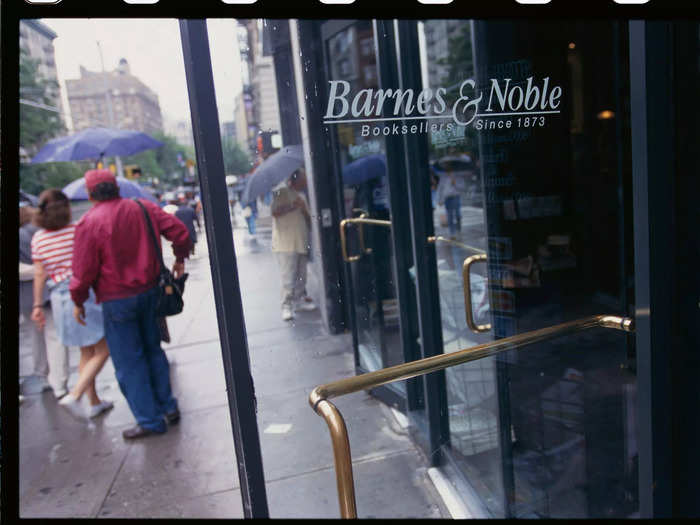
A Barnes & Noble store in 1998. James Leynse/Corbis via Getty Images
Source: Barnes & Noble
Barnes & Noble opened its flagship store on New York City's Fifth Avenue in 1932, in the midst of the Great Depression. The bookseller still operates a store in that neighborhood today, right near Union Square.
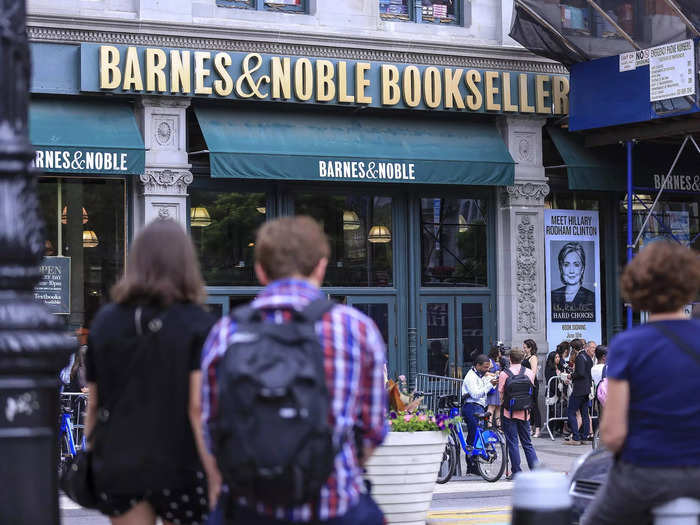
A Barnes & Noble store near Union Square, not far from the company's original location. Bilgin Sasmaz/Anadolu Agency/Getty Images
In 1971, Barnes & Noble was acquired by Leonard Riggio. Riggio had gotten his start working at the New York University bookstore while he was a student. He later dropped out and opened his own bookstore at age 24. Six years later, he borrowed $1.2 million to buy what was then just a single Barnes & Noble store.
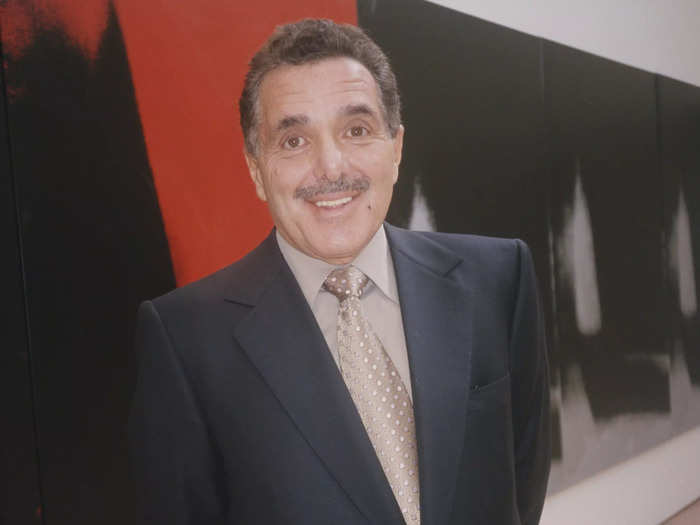
Leonard Riggio in 2003. Rose Hartman/Getty Images
Source: New York Magazine
Riggio brought his family members into the business: His dad ran the office, and his brothers Jimi and Steve worked in the store. Fast-forward to the late 1990s, and Steve was serving as Barnes & Noble's vice chairman (and eventual CEO), while Jimi ran a trucking business that shipped the company's books.
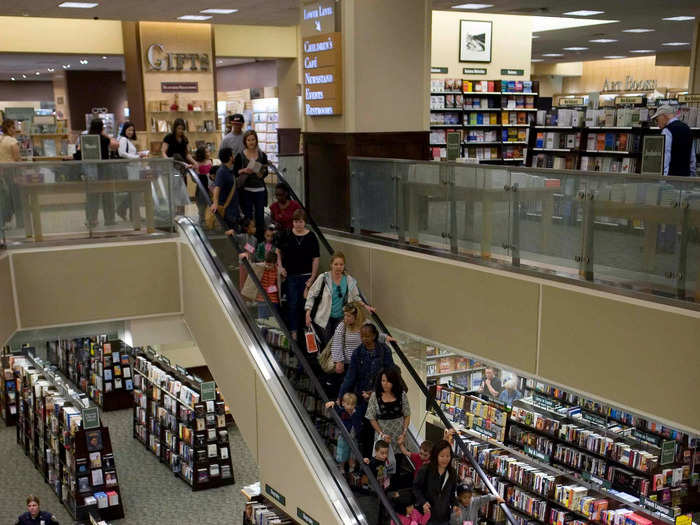
A Barnes & Noble store in 2009. Mark Lennihan/AP
Source: New York Magazine
Five years after buying the business, Riggio had boosted annual sales from $1 million to $10 million, he told New York Magazine in 1999. He was making headlines for adding perks like customer telephones and bathrooms to the store, which made shoppers want to linger.
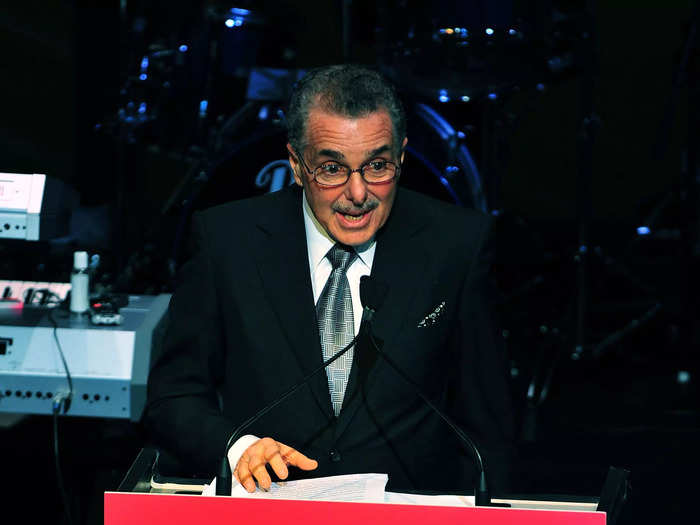
Leonard Riggio in 2009. Andrew H. Walker/Getty Images
Source: New York Magazine
A turning point for Barnes & Noble arrived in the mid-1980s when Riggio met Anton Dreesmann, the CEO of Vendex International, a Dutch retail giant. Riggio convinced him to invest, and Dreesmann paid $18 million for a 30% stake in the business. The cash infusion allowed Riggio to start thinking about expanding the business.
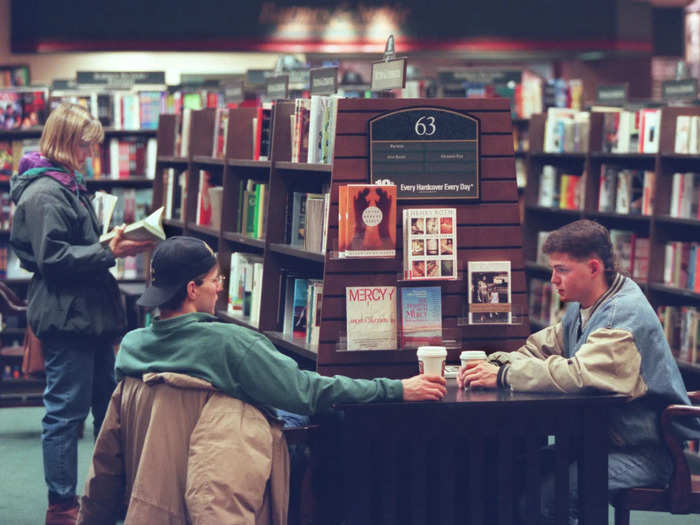
A Barnes & Noble store in 1996. BRUCE BISPING/Star Tribune via Getty Images
Source: New York Magazine
In 1987, Barnes & Noble became the nation's second-largest bookstore overnight when it purchased B. Dalton Bookseller, a national chain made up of 797 stores. Other acquisitions followed, including Doubleday Book Shops and BookStop. Barnes & Noble went public in 1993.
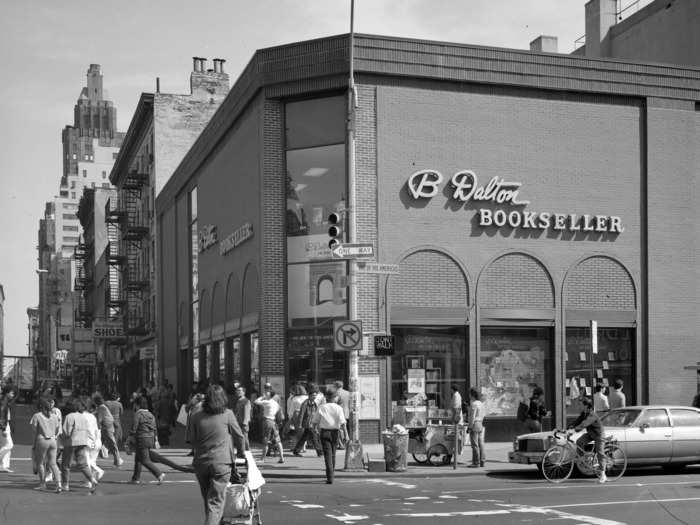
A B. Dalton Bookseller store circa 1984. Edmund Vincent Gillon/Museum of the City of New York/Getty Images
Source: Barnes & Noble
Barnes & Noble as we know it today was born in the late 1990s, when Riggio launched the superstore. The hallmarks? A massive footprint; a wide selection of books, music, and toys; and a comfortable atmosphere that encouraged customers to stay awhile.
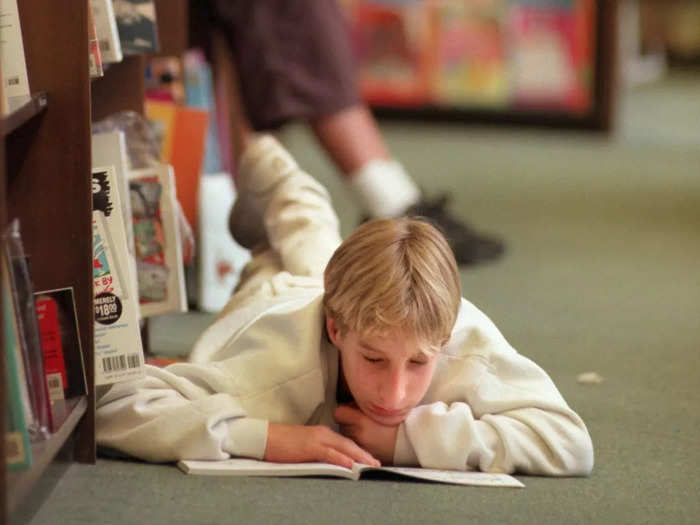
A customer at a Barnes & Noble store in 1997. Spencer Weiner/Los Angeles Times via Getty Images
Source: Barnes & Noble
By 1999, Barnes & Noble operated 520 superstores nationwide, plus 465 B. Dalton stores. The company owned roughly a quarter of the nation's bookstore market, and one out of every eight trade books sold in the US were purchased at a Barnes & Noble.
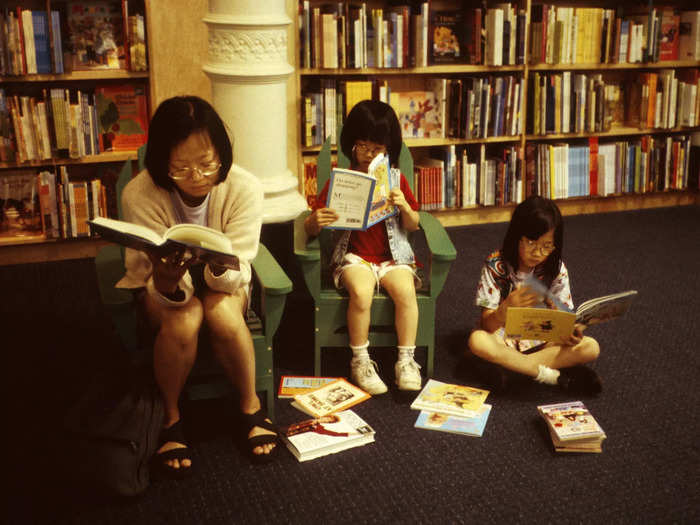
Shoppers at a Barnes & Noble store in 2001. Education Images/Universal Images Group via Getty Images
Source: New York Magazine
But Barnes & Noble's reputation was taking something of a hit: small, independent bookstores were being edged out by the superstores, which were able to strike deals with publishing houses, sell more copies of books, and in some cases, had better economies of scale. In the late '90s, the tension between bookstores and Barnes & Noble was so intense, it inspired Nora Ephron's 1998 film "You've Got Mail."
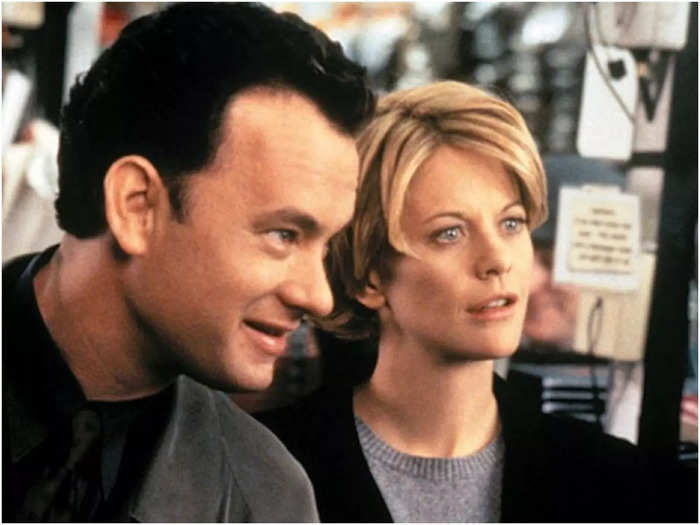
"You've Got Mail," starring Meg Ryan and Tom Hanks. Warner Bros.
Source: New York Magazine
Independent bookstores weren't Barnes & Noble's only competition: Borders, a bookselling chain founded in Michigan in 1971, had opened hundreds of stores in the US and abroad. Borders' edge was in its inventory management system, which was able to predict what customers would buy.
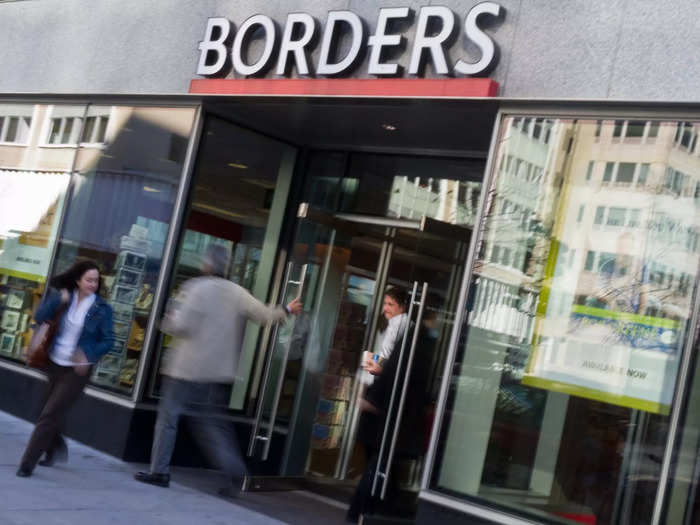
A Borders bookstore in 2011. NICHOLAS KAMM/AFP via Getty Images
Source: NPR
But Borders made some missteps, including betting big on CDs and DVDs and opting not to invest in starting up an e-commerce business, instead outsourcing it to an upstart new company: Amazon.com.
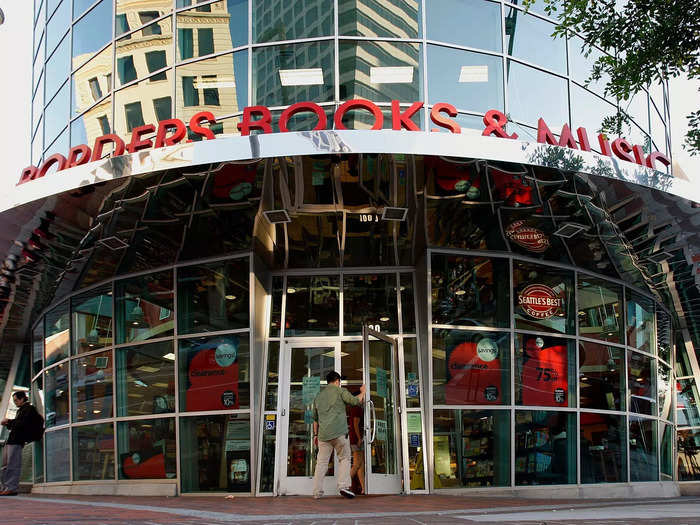
A Borders store in California in 2011. Gary Friedman/Los Angeles Times via Getty Images
Source: NPR
By 2011, Borders had filed for bankruptcy, laid off 11,000 employees, and closed its remaining 400 stores. Barnes & Noble later purchased the Borders trademark for $13.9 million.
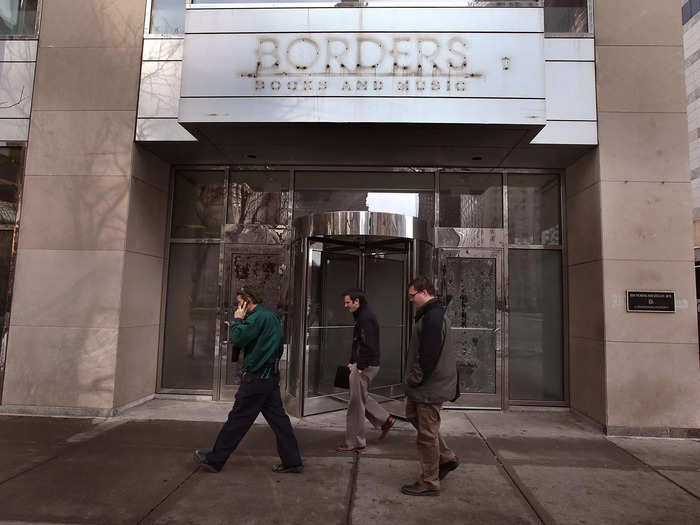
Scott Olson/Getty Images
Source: NPR, Boston Business Journal
Meanwhile, that fledgling new challenger, Amazon.com, had entered the field. Jeff Bezos' bookselling website had launched in 1995 and quickly become a threat to Barnes & Noble's business. The site was selling $110 million worth of books per year by 1997 and had made its stock market debut.
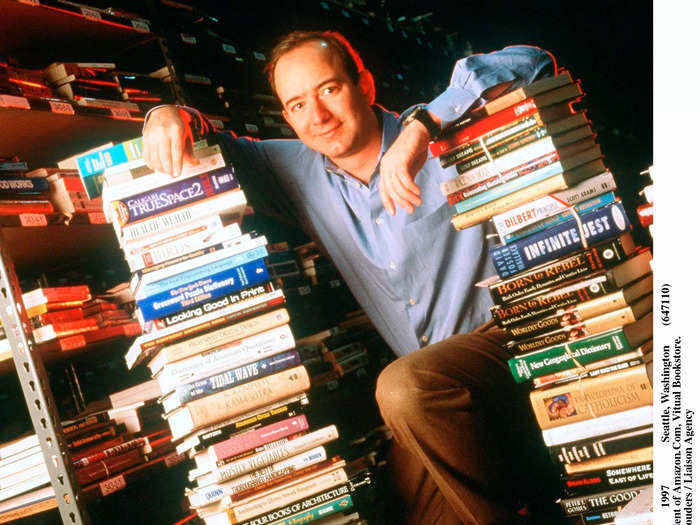
Jeff Bezos in 1997. Paul Souders/Getty Images
Source: Fortune, New York Magazine
Amazon's founder, Jeff Bezos, then 35, was painted as a hip entrepreneur with his finger on the pulse of what young consumers wanted. Riggio and Barnes & Noble, by comparison, were the Goliath to Bezos' David.
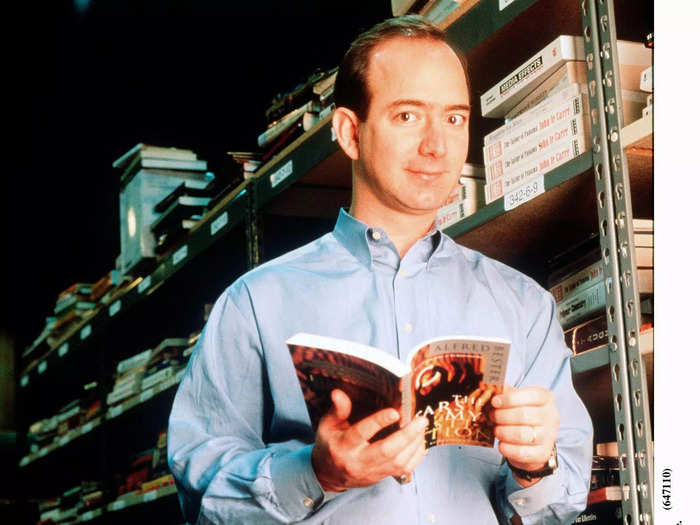
Jeff Bezos in 1997. Paul Souders/Getty Images
Source: The New York Times
But Barnes & Noble had moved online too. The company hired Silicon Valley web designers to build barnesandnoble.com, launching with a 30% discount on all hardcover books — a discount Amazon was forced to match.
Customers shop at Barnes & Noble store in 2003. Mark Mainz/Getty Images
Source: Fortune
In 2004, Barnes & Noble sold back its shares in its video game business and spun it out into a separate company: GameStop. "Owning major stakes in businesses that had separate stocks was confusing for investors," Riggio told The Wall Street Journal at the time. "People don't like retail conglomerates. This creates greater clarity."
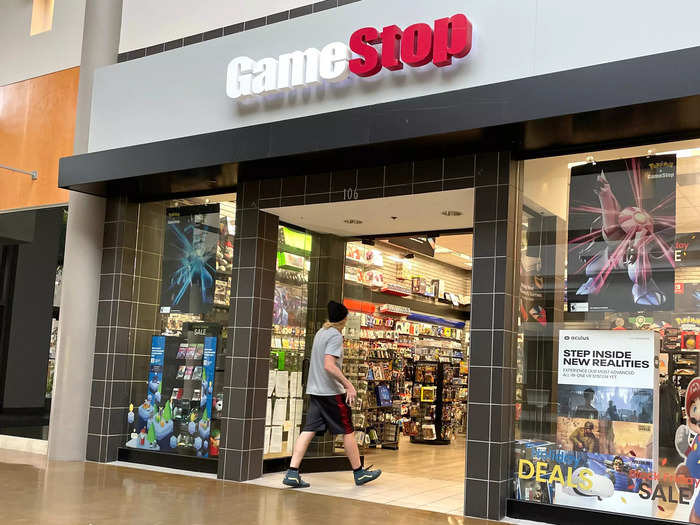
A young man walks into a GameStop video game store in San Rafael, California. Justin Sullivan/Getty Images
Source: The Wall Street Journal
Barnes & Noble entered the e-reader market in 2009 with the launch of its own device, the Nook. Amazon had beaten Barnes & Noble to the punch with the launch of the Kindle two years prior.
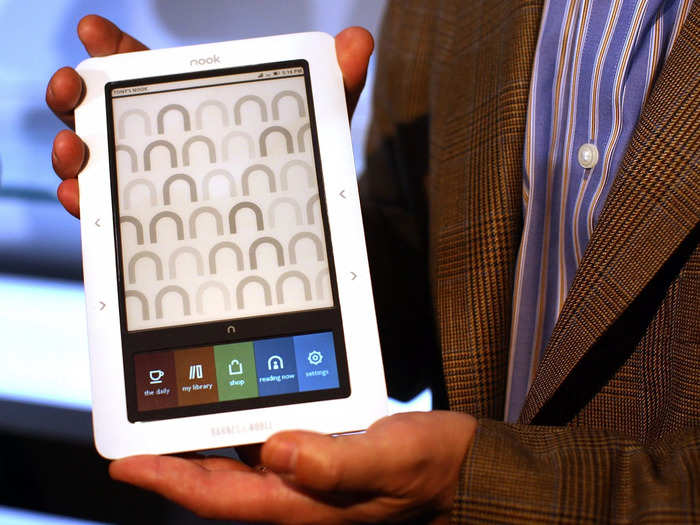
The launch of the Nook e-reader in 2009. Spencer Platt/Getty Images
Source: Barnes & Noble
The 2010s were tumultuous for the chain, which experienced declining sales, a falling stock price, and executive turmoil, including a sexual harassment scandal. Barnes & Noble closed its original Fifth Avenue store in 2014, and roughly 150 others between 2008 and 2018.
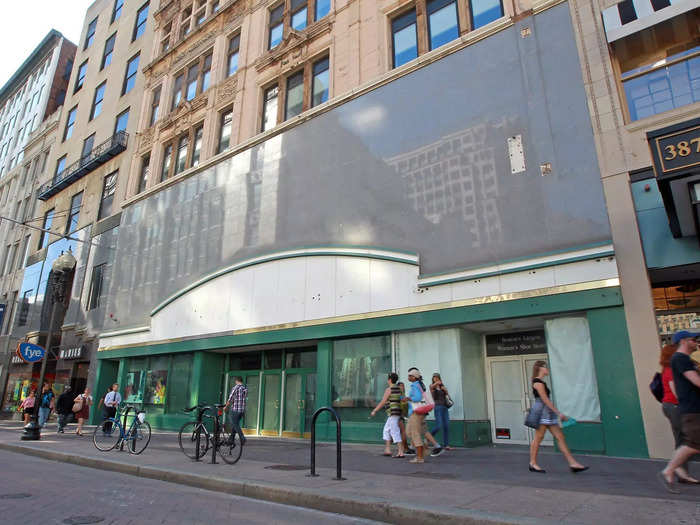
A closed-down Barnes & Noble bookstore in Boston in 2011. Stuart Cahill/MediaNews Group/Boston Herald via Getty Images
In 2018, the bookseller laid off 1,800 employees, and by the end of the year, it had reported seven straight quarters of losses. One year later, the company was bought by hedge fund Elliott Advisors for $638 million and James Daunt, the chief exec of British bookstore chain Waterstones, was named CEO.
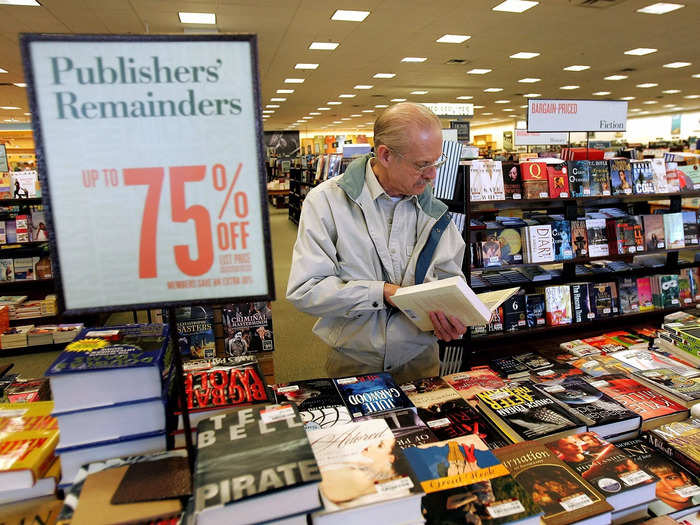
A shopper browses at a Barnes & Noble store in 2006. Tim Boyle/Getty Images
Then the pandemic hit. Like other retailers, the company had to temporarily shutter hundreds of its stores, but it ended up being an unexpected boon for Barnes & Noble's business. The bookseller used the closures as an opportunity to revamp its stores, which had gotten "a bit ugly" over the years, Daunt told The New York Times.
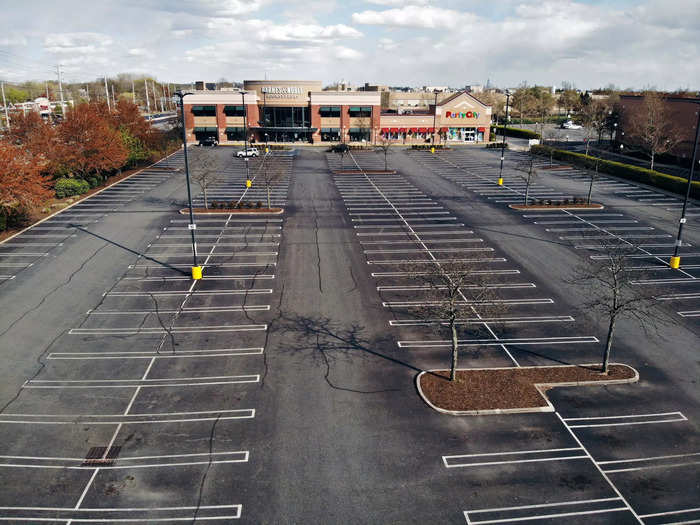
A Barnes & Noble store in New Jersey closed during the early weeks of the pandemic. Ted Shaffrey/AP
Source: The New York Times
Plus, book sales had started rebounding after years of slowed growth. "The pandemic was very good for reading," Daunt recently told The Times. "You force people to spend a lot of time at home, and at some point the TV becomes dull."
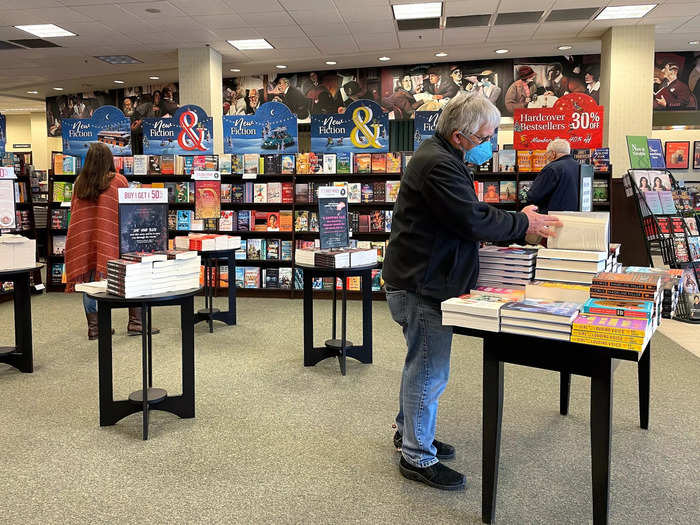
Customers at a Barnes & Noble store in 2021. Justin Sullivan/Getty Images
Source: Insider, The New York Times
Daunt instituted other changes, too. He started letting individual stores make decisions about which books to carry; cut back on the random products stocked at stores; started stocking more titles from highly popular genres like manga; and stopped accepting money from publishers to place books in prominent spots, which had caused expensive headaches, he told The Times.
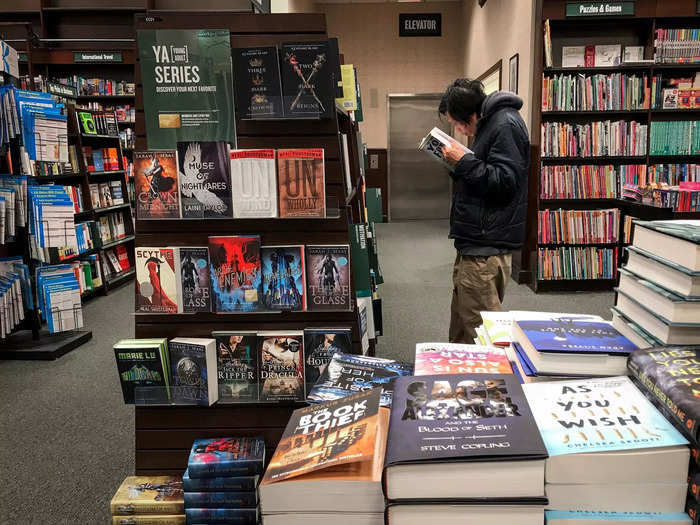
A shopper at a Barnes & Noble bookstore in 2019. Drew Angerer/Getty Images
Source: The New York Times
By 2022, sales were up 3% compared to pre-pandemic levels and book sales were up 14%. And after more than a decade of shrinking its store fleet, Barnes & Noble is growing once again: The company announced in late 2022 that it plans to add 30 new stores in the coming year.
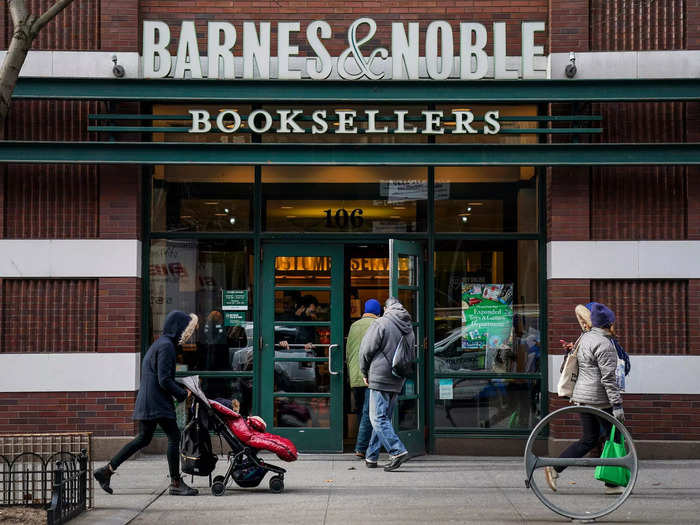
Pedestrians walk by a Barnes & Noble store. Drew Angerer/Getty Images
The company announced in February that it's launching a new $40-a-year membership program, not unlike Amazon's and Walmart's programs, that will offer discounts on books, free shipping, a new tote bag each year, and upgrades on drinks at the bookstore cafes.
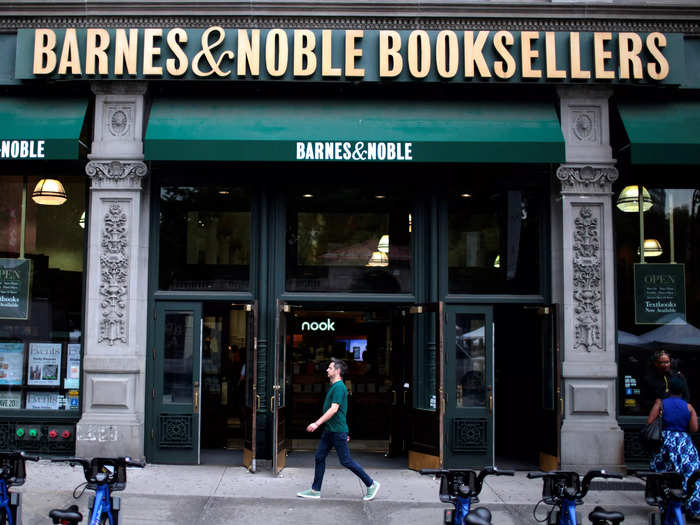
Mike Segar/Reuters
Source: The Wall Street Journal
Popular Right Now
Advertisement